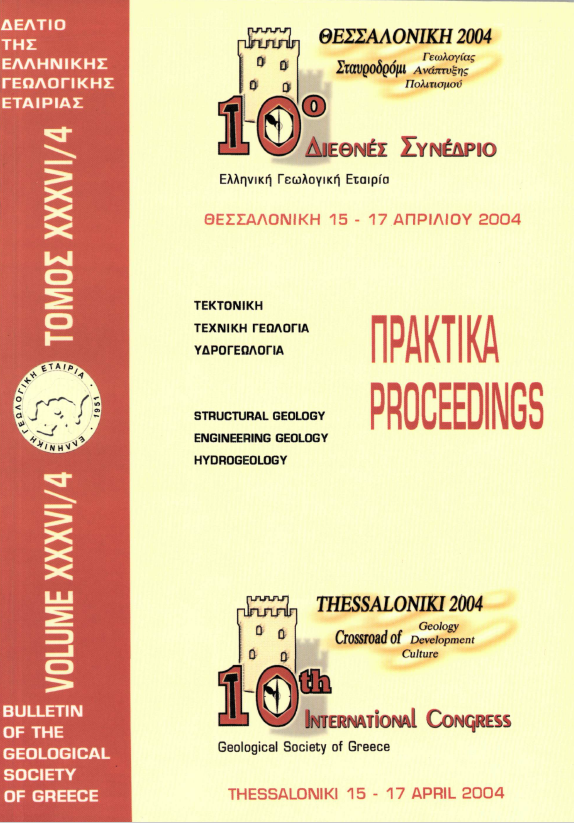ESTIMATION OF THE STRAIN TENSOR IN TUNNEL SECTIONS, BASED ON GEOMETRIC (GEODETIC ETC.) DATA

Abstract
Monitoring of tunnel deformation during their excavation is based on measurements of displacements of either single points or contraction of selected distances across the tunnel section. Such data, however, due to measurement errors and local effects may not be consistent with each other, and cannot describe precisely the real behavior of the ground/support shell. In the present study, a theory introduced to estimate the ground surface strain field on the basis of surveying measurements is adopted in order to estimate the average strain of tunnel sections. This theory is based on the assumption of uniform deformation across the tunnel section and of measurements affected by random errors only and uses repeated monitoring data (displacements or distance changes). The proposed theory was applied to deformation data from representative sections of the Acheloos Diversion Tunnel (Western Thessaly, Greece), subject to nearly uniform strain. Mean strain changes were estimated for various time intervals following the excavation. About one year after the excavation, maximum horizontal strain of -1.3%, accompanied by practically negligible vertical strain, was computed.
Article Details
- How to Cite
-
Kontogianni, V. A., Roumanis, M., Psimoulis, P. A., Sfeikos, A., & Stiros, S. C. (2004). ESTIMATION OF THE STRAIN TENSOR IN TUNNEL SECTIONS, BASED ON GEOMETRIC (GEODETIC ETC.) DATA. Bulletin of the Geological Society of Greece, 36(4), 1918–1924. https://doi.org/10.12681/bgsg.16676
- Section
- Engineering Geology, Hydrogeology, Urban Geology

This work is licensed under a Creative Commons Attribution-NonCommercial 4.0 International License.
Authors who publish with this journal agree to the following terms:
Authors retain copyright and grant the journal right of first publication with the work simultaneously licensed under a Creative Commons Attribution Non-Commercial License that allows others to share the work with an acknowledgement of the work's authorship and initial publication in this journal.
Authors are able to enter into separate, additional contractual arrangements for the non-exclusive distribution of the journal's published version of the work (e.g. post it to an institutional repository or publish it in a book), with an acknowledgement of its initial publication in this journal. Authors are permitted and encouraged to post their work online (preferably in institutional repositories or on their website) prior to and during the submission process, as it can lead to productive exchanges, as well as earlier and greater citation of published work.



